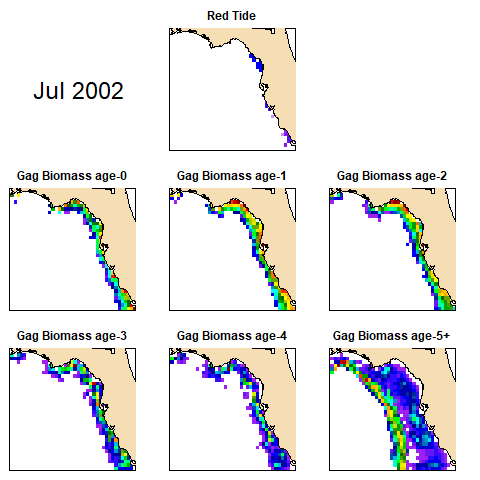On the West Florida Shelf, episodic red tide blooms caused by the dinoflagellate Karenia brevis can have major effects on the ecosystem, fisheries, tourism, and human health. For over a decade, scientists have attempted to incorporate red tide into stock assessment models of red and gag grouper. On several occasions, managers have been forced to make decisions about next years’ catch while a red tide was ongoing.
To address this challenge, we updated a WFS Ecospace model to estimate past red tide mortality rates and provide near-real time estimates of ongoing blooms. The model accounts for spatial overlap of red tide with species, bloom duration and severity, lethal and sublethal effects, avoidance, and food web effects. We focused on Gag Grouper (Mycteroperca microlepis), because empirical data suggests the species is severely impacted by red tides and management decisions have been linked to assumed red tide impacts. Our results show high red tide mortality rates for Gag Grouper, especially for younger stanzas that are distributed closer to shore and for the year 2005, which was the most severe year in our analysis. Further, our estimates of red tide mortality improved fits to the index data when included in the stock assessment model. This suggests that output from the WFS Ecospace model is consistent with other data streams used for stock assessment and also that future stock assessments could be improved by including red tide effects in this manner.
Near-real time estimates of the 2021 red tide event were used in stock projections to set catch limits for gag from 2022-2025, marking the first time an ecosystem model has been used in actual fisheries management advice in the Gulf of Mexico. This research has been supported by the FWC, Florida Sea Grant, and recently by the NOAA Restore Science Program.

Learn more at: NOAA Restore Project Page; Red tide visualization web application; WFS Ecosystem Model
